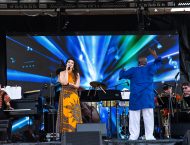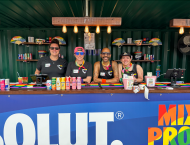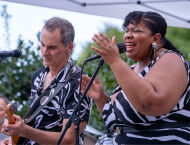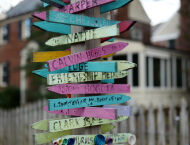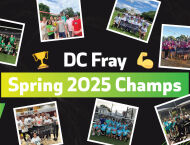Culture
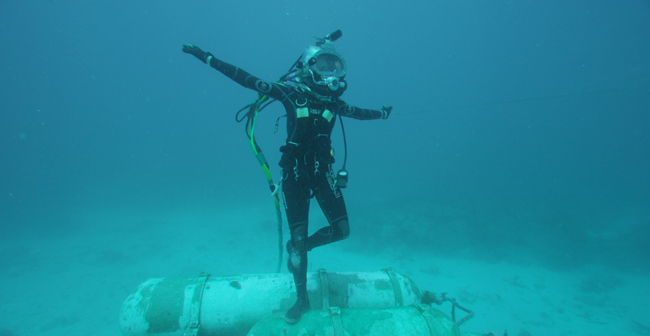 Photo: Fabien Cousteau
Photo: Fabien Cousteau
A Day in the Life: Emerging Explorer Grace Young
March 31, 2018 @ 12:00am
It all began on the Great Lakes of Ohio and Michigan. As she sailed across the open waters with her family, a pint-sized Grace Young began to develop a deep love for the water and everything in it. After she moved to DC in high school, Young took a school trip to the Chesapeake Bay that could only be described as life-changing. In this moment, she realized she couldn’t live without the calmness of the waves and the beauty of a sunrise out at sea.
So she followed her dreams. In 2017, National Geographic named Young as one of 14 Emerging Explorers, or “uniquely gifted and inspiring scientists, conservationists, storytellers and innovators” who are “already making a difference and changing the world.” As part of the program, she received a $10,000 grant to fund research for new technology to explore the ocean and save coral reefs.
On April 10, Young will host “Extreme Ocean: Exploring the Deep,” a discussion about why taking care of the ocean is so crucial to preserving life as we know it. She’ll also go into detail about her exciting 15-day adventure of living nearly 20 meters (66 feet) below sea level off the coast of the Florida Keys during Fabien Cousteau’s Mission 31. We caught up with Young before her upcoming talk about the Emerging Explorers program, protecting our coral reefs and being a former ballerina, among other things.
On Tap: How did you feel when you found out you were nominated for Emerging Explorers?
Grace Young: I was absolutely thrilled. It’s made me think a lot more about how I’m sharing the work that I do. There was this quote: “If you don’t share your science, you might as well not have done it.” So now I’m trying to be conscious of that. I’ve been so fortunate to be a woman interested in technology from a young age [and] to have my degree from MIT, but many women don’t even realize that’s a career they can have, so I want to share that in order to bring the best talent into the field that we can.
OT: What will you be focusing on during the “Extreme Ocean” discussion?
GY: I’m looking forward to sharing my stories about my time on the ocean and my perspective as a technology developer, and what I think of as the biggest changes affecting our ocean. People don’t tune in unless they learn to love it and see why I’m passionate about it, and why so many people at Nat Geo and other places are too.
OT: How does the work that you’re doing to save these coral reefs affect lives in DC?
GY: Two things: one, even if you’re living far from the ocean, we’re still all connected to the ocean. The ocean covers 71 percent of our planet; it provides half of the oxygen we breathe, and it’s a protein source for at least a billion people. Two, I always think, “What kind of ocean do we want to pass on to the next generation?” I’ve seen remote beaches that are covered in trash, [with] more coming in with each wave. On the other hand, I’ve been able to jump off a boat in the middle of the Atlantic Ocean and go swimming at sunset. I would like for that to be an experience that everyone can have. But it’s not just about us. Those stories connect us to the ocean, but it’s about keeping our planet habitable for our species and all the other species.
Can’t Live Without
My family
The ocean
Coral-safe sunscreen
StarTalk podcast by Neil DeGrasse Tyson
STEM education
OT: Is developing technology to help restore these coral reefs a new movement?
GY: My work uses cutting-edge technology, but artificial reefs have been used since ancient times. People learned pretty early that if you have any artificial structure, it attracts fish, and putting any collection of rocks together worked okay. What we’re trying to do now is use advancements in technology and a lot of data to design optimal artificial reefs so that they can attract fish, keep healthy coral reefs and help protect against shoreline erosion.
OT: Does seeing all of this pollution in the ocean ever make you feel discouraged?
GY: I try not to get discouraged. There are so many people who really care, and new businesses and technologies are being developed to try and help solve this problem. We only realized it was a huge problem maybe like 50 to 60 years ago, and it’s hard to make big-scale changes, but I think the movement is there.
OT: I read that we know more about outer space than we do about our own oceans. How do you feel about that?
GY: It baffles me. I actually wrote my undergraduate thesis on this topic. I went to look at the history, and space and ocean exploration were on pretty much the same path until the 1960s when we put man on the moon and men at the deepest point of the ocean. But after that, the trajectories really diverged. Even now, NASA’s budget for just pure exploration is 150 times greater than any equivalent exploration budget for NOAA [the National Oceanic and Atmospheric Administration]. But I think that’s starting to change. I think everyone’s realizing how important, how serious and how alien our ocean is.
OT: Do you think it’s about time we start looking more inward to ourselves on Earth?
GY: Yes. There’s a T.S. Elliot quote that says, “At the end of our exploring, we come back to where we came from.” From a technology standpoint, I’m thinking of the new, unexpected discoveries we’re going to make by developing technologies that help us explore the ocean. Because GPS and electromagnetic waves that we rely on for most communication don’t work underwater, we have to innovate – we have to do something different and more creative. I think that is going to have so many unintended discoveries.
Work Must-Haves
Scuba gear
Air
Notebook
Pen
Watch
OT: As a former ballerina and with your experience working on a coral reef sculpture, what do the arts mean to you?
GY: I trained at CityDance at Strathmore, and I was also at the Washington Ballet School. That really shaped who I am and my work ethic. I think it taught me discipline, and how to be inspired by my peers, but also how to focus on my own strengths and weaknesses. Although I don’t dance anymore, I watch the ballet as much as I can. I think art and science are connected. There’s creativity involved in both of them, so that certainly informs my thought process.
OT: How important is it to marry science and arts together?
GY: Arts and science are fundamentally very similar thought processes. We can learn how to become a better scientist by learning the arts, and vice versa. Art can be a great way to engage in a unique way with science. I was at the UN’s [Ocean Conference] in New York City last summer, and in front of the UN, they had a gigantic whale and fish sculpture. From afar they just looked like great sculptures, but up close, they were made of little bits of plastic that people pulled up from this one beach. It was so moving, and I feel like if you never heard of this plastic problem before, you definitely got the picture right there with that piece of work.
Don’t miss Grace Young at National Geographic on April 10 from 7:30-9 p.m. Tickets are $25. Learn more about the event at www.nationalgeographic.org/explorers.
The National Geographic Museum: 1145 17th St. NW, DC; 202-857-7700; www.nationalgeographic.org/dc/events


